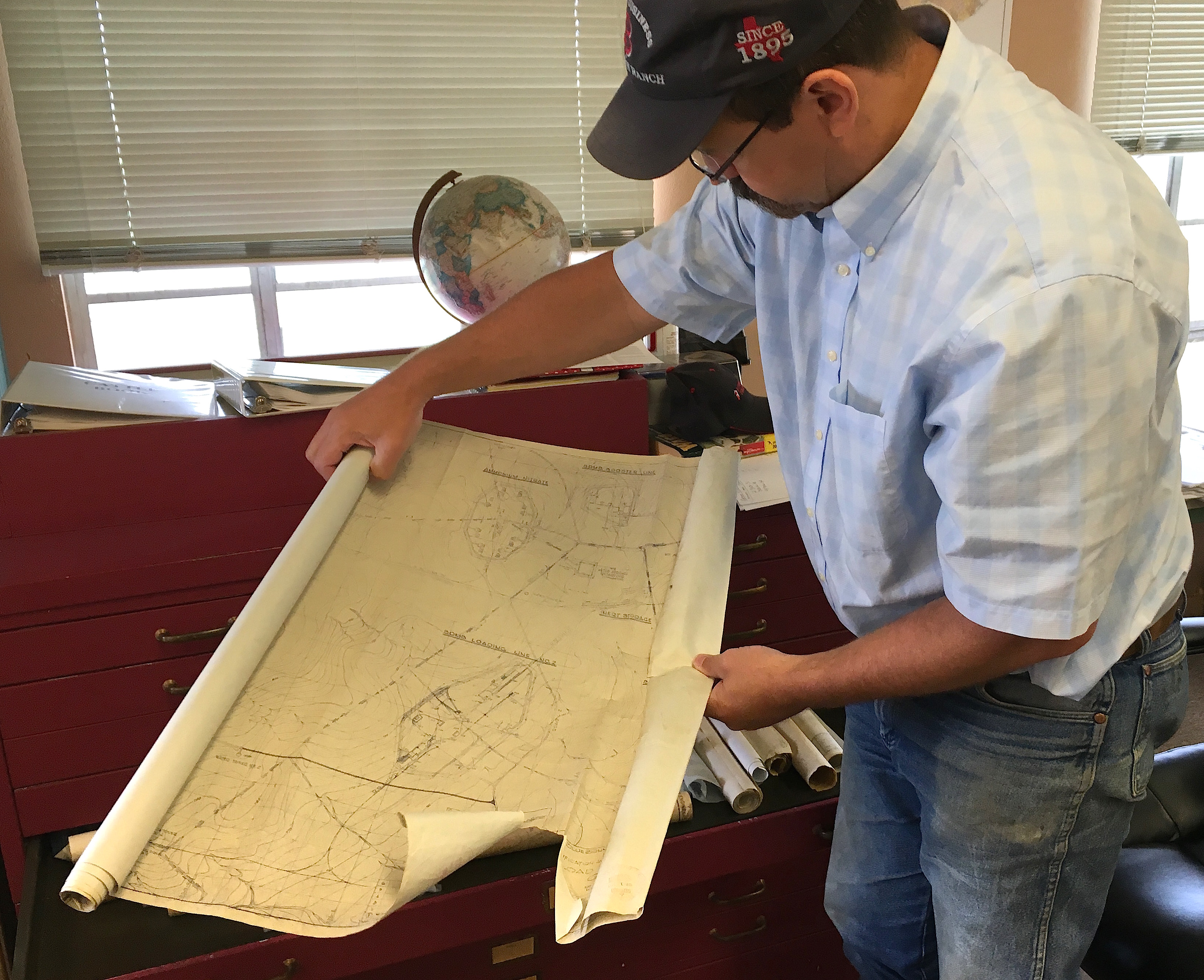Farm & Ranch
[AgriLife Today] McGregor Research Center serving as ‘nexus’_of Texas A&M AgriLife beef initiative

By: Blair Fannin
- Writer: Blair Fannin, 979-845-2259, [email protected]
- Contact: Dr. Jason Sawyer, 979-862-7679, [email protected]
McGREGOR – It’s billed by some as a best kept secret, but nestled back off Farm-to-Market Road 773 in McGregor lies the nexus of activity for Texas A&M AgriLife’s sustainable beef solutions research.
This type of research provides science-based recommendations to help ranchers maintain high-quality beef products for the benefit of both producers and consumers.
The history of the McGregor Research Center dates back to World War II when the Navy first established the 17,000-acre site as a weapons factory. It was named Bluebonnet Farm and was to serve as a massive stockpile weapons facility, but the war ended in 1945, so it was later repurposed as an agricultural research farm to help feed the anticipated onslaught of post-war baby boomers.
“The Navy identified a way to help educate individuals by approaching the A&M System and giving this facility to them to turn into a research farm,” said Dr. Jason Sawyer, center superintendent.
Sawyer said the idea was that the farm could host result demonstrations and house soldiers who would come to the farm and receive an education on small-acreage farming.
“They would work as an apprentice and after a few years they would go out on their own,” Sawyer said.
But those plans never developed and the facility was deeded to Texas A&M. However, the Navy took back 12,000 acres during the Korean conflict. It was given back to A&M once again only to be taken back during the Vietnam conflict in the 1960s. After that, 6,400 acres were permanently deeded to the Texas A&M University System with a first option to lease the remaining acreage from the Navy.
The remainder now belongs to the City of McGregor, which leases it to Space X, which designs, manufactures and tests rockets and spacecraft.
Sawyer said many of the improvements in Texas beef cattle production can be credited to the research center at McGregor starting in the 1970s. That’s when Dr. Tom Cartwright led research project efforts in cattle population genetics. Known as H19 36, the project included Drs. Charlie Long and Jim Sanders.
It was also the time when the center was turned over to the department of animal science for oversight.
“My role is to create a vision to help the Texas A&M University System fulfill its mission of production beef cattle,” Sawyer said. “The way we achieve that is to provide a platform to deploy ideas and experiments to fulfill this goal. We want to encourage that the resources we commit here are (dedicated) to those goals.”
Today, the Texas A&M AgriLife Research beef projects aim to increase the viability of beef production systems, Sawyer said. Some of the goals of these projects include:
– A 30 percent reduction in land area required to produce a pound of beef.
– 15 percent reductions in greenhouse gas emissions from beef systems, particularly primary production.
– Define and identify traits that provide environmental resilience.
– Identify strategies that capitalize on interactions between genotypes, environments and production technologies for optimized systems.
– Stabilizing and increasing cattle populations due to increased competitiveness.
One such study already underway is a patriotic ear tag color system as part of a beef cattle production system project. Its goal is to improve calving efficiency and ultimately produce more pounds of beef on fewer acres. The projects includes three sets of cows with one quarter Bos Indicus influence. The cattle sport red, white or blue ear tags to help identify which time of the year they calved or will calve.
“The goal of this project is to develop a system that achieves 35 percent improvement in pounds of calf weaned per acre,” Sawyer said.
Overall, Sawyer said the McGregor research projects are “directly applicable to established operations.”
“More importantly, these outcomes can confer competitive advantage to new entrants and enable success and the sustained output of the industry.”
-30-
Find more stories, photos, videos and audio at http://today.agrilife.org
Farm & Ranch
Managing Show Cattle Through The Winter

By Heather Welper
Husband and wife duo, Heather and Calvin Welper, are the Co-Owners and Operators or Two C Livestock, located in Valley View, Texas.
The pair’s operation has a show cattle focus where they raise and sell purebred heifers of all breeds and club calf Hereford steers.
When it comes to show cattle, the Welpers know a thing or two including how to prepare for the cold winter months and the Texas major show season run.
To read more, pick up a copy of the November edition of North Texas Farm & Ranch magazine, available digitally and in print. To subscribe by mail, call 940-872-5922.

Farm & Ranch
Double M Ranch & Rescue

By Hannah Claxton, Editor
As the sun rises each day, so do the dozens of mouths that Meghan McGovern is responsible for getting fed. Rather than the sounds of a rooster crowing, McGovern hears the bellows and bleats of a variety of exotic deer, the chortle of kangaroos, the grunts of water buffaloes, and the chirps of a lemur.
Nestled against the banks of the Red River, the Double M Ranch and Rescue, with its high game fences and deer sprinkling the landscape,s its in stark contrast to the surrounding ranches.
“Having deer is kind of like eating potato chips- you can never actually have just one,” said McGovern with a laugh.
McGovern has several herds to take care of- fallow deer, axis deer, water buffalo, goats, and bison. In smaller numbers, there’s also a few kangaroos, a lemur, a potbelly pig, a pair of zebras, a watusi, and a few horses.
To read more, pick up a copy of the November edition of North Texas Farm & Ranch magazine, available digitally and in print. To subscribe by mail, call 940-872-5922.

Farm & Ranch
Acorn Toxicity

By Barry Whitworth, DVM, MPH
With the prolonged drought, most pastures in Oklahoma end up in poor condition. With the lack of available forage, animals may go in search of alternative foods.
If oak trees are in the pastures, acorns may be a favorite meal for some livestock in the fall. This may result in oak poisoning.
Oak leaves, twigs, buds, and acorns may be toxic to some animals when consumed.
To read more, pick up a copy of the November edition of North Texas Farm & Ranch magazine, available digitally and in print. To subscribe by mail, call 940-872-5922.

-

 Country Lifestyles2 years ago
Country Lifestyles2 years agoScott & Stacey Schumacher: A Growth Mindset
-

 Country Lifestyles8 years ago
Country Lifestyles8 years agoStyle Your Profile – What your style cowboy hat says about you and new trends in 2017
-

 HOME8 years ago
HOME8 years agoGrazing North Texas – Wilman Lovegrass
-

 Outdoor10 years ago
Outdoor10 years agoButtercup or Primrose?
-

 Country Lifestyles5 years ago
Country Lifestyles5 years agoAmber Crawford, Breakaway Roper
-

 Country Lifestyles9 years ago
Country Lifestyles9 years agoJune 2016 Profile – The man behind the mic: Bob Tallman
-

 Equine1 year ago
Equine1 year agoThe Will to Win
-

 Country Lifestyles8 years ago
Country Lifestyles8 years agoDecember 2016 Profile, Rusty Riddle – The Riddle Way





